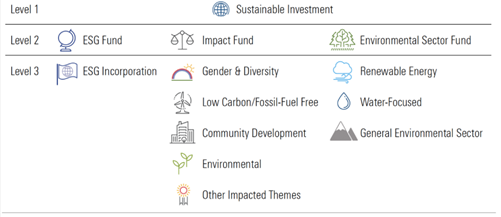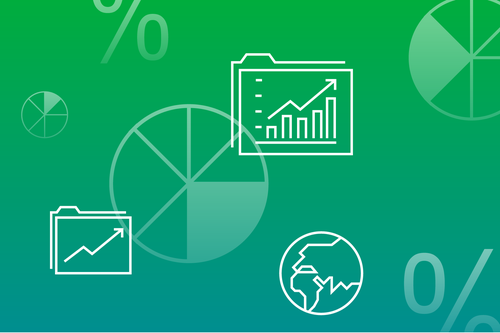Change is slow but inevitable.

This week, with Earth Day on Friday, we at Morningstar.ca, are focusing on all things sustainable. Now, more than ever, there’s no better time to think about investing sustainably, and so today, we help you search for top-performing sustainable mutual funds available from Canadian-domiciled mutual fund companies. Given the nuanced nature of the terminology, and quickly evolving landscape, let’s be clear about how these funds were found. Funds on this list have met the following requirements:
1) Morningstar has identified the fund as a Sustainable Investment. Morningstar identifies said funds by reading through regulatory documents (namely the prospectus, investment strategy, and investment objectives) to understand whether the fund uses sustainable investment approaches in its investment decision making process. At present, Morningstar Canada’s framework for identifying sustainable investments looks like this:

At a high level, sustainable investments are those that use ESG criteria as a core input into buying and selling decisions (ESG Fund), or ones that seek to make a measurable impact around a specific theme like gender & diversity or community development (Impact Fund), or ones that invests broadly in an environmental sector like clean energy (Environmental Sector Fund). A fund can be identified as using more than one approach. So long as one approach is noted, the fund is marked as sustainable by Morningstar.
It is important to note that this framework looks at what is stated by the fund manufacturer. It does not measure how effective the fund is at reaching these goals (more on this later).
2) Morningstar has granted the fund a Morningstar Star Rating of 4 stars or better. The Morningstar Rating for funds (informally known as the Star Rating) is an objective look-back at how a fund has performed relative to its category peers on an after-fee risk-adjusted basis over time. Though it is backwards looking, our research points to evidence that good performing funds tend to continue to perform well, and poor performing funds tend to continue to perform poorly until they are liquidated or merged. As such, the Star Ratings on their own are an effective starting point for further research.
3) The Funds have a medal awarded to them. Finally, we look for funds that have received a Morningstar Quantitative Rating (MQR) of Bronze, Silver, or Gold. The MQR is our assessment of a fund’s ability to produce after-fee alpha in the future. Similar to our analyst ratings, the MQR is derived from an analysis of the people, process, and parent of the fund. Historically, we’ve found that medalist rated funds (gold, silver, bronze) as a group do tend to outperform neutral and negative rated funds on an ex-post (after the fact) basis.
The funds that meet the above three criteria are listed in the table below. Investors are urged to look at first the category to which the fund belongs to understand where the fund might fit in your overall asset allocation.
Also included in the table is the fund’s Sustainability Rating (also known as the globe rating). This is a measure of the amount of material financial risk associated with Environmental, Social, and Governance (ESG) type factors within the portfolio. Though the rating itself was not a requirement to make it onto today’s screen, the ratings serve as informational for those that seek to reduce the degree of ESG risk within their portfolio.
Additionally, the table also includes whether the fund qualifies for Morningstar’s Low Carbon Designation, which is based on (1) the firm’s exposure to carbon-related risks throughout the value chain, (2) Morningstar Sustainalytics’ view on the degree to which the firm’s activities and products will be targeted for alignment with a low-carbon economy and (3) the firm’s ability to manage, and the quality of its management approach, to reduce carbon risks.
Note that where available, the do-it-yourself (D) share classes of qualifying funds are listed here. DIY share classes often offer the lowest MERs and do not include the cost of advice. Otherwise, the fee-based (F) share classes are listed, which are available to qualifying investors that have a fee-based account with an advisor. For fee-based share classes, an overall management fee/advice fee is charged outside of the MER. All of the listed funds are also available via commission-based share classes, which typically come with a bundled MER which includes the cost of advice an distribution.
This article does not constitute financial advice. Investors are recommended to conduct their own independent research before buying or selling any of the investments listed here.


















